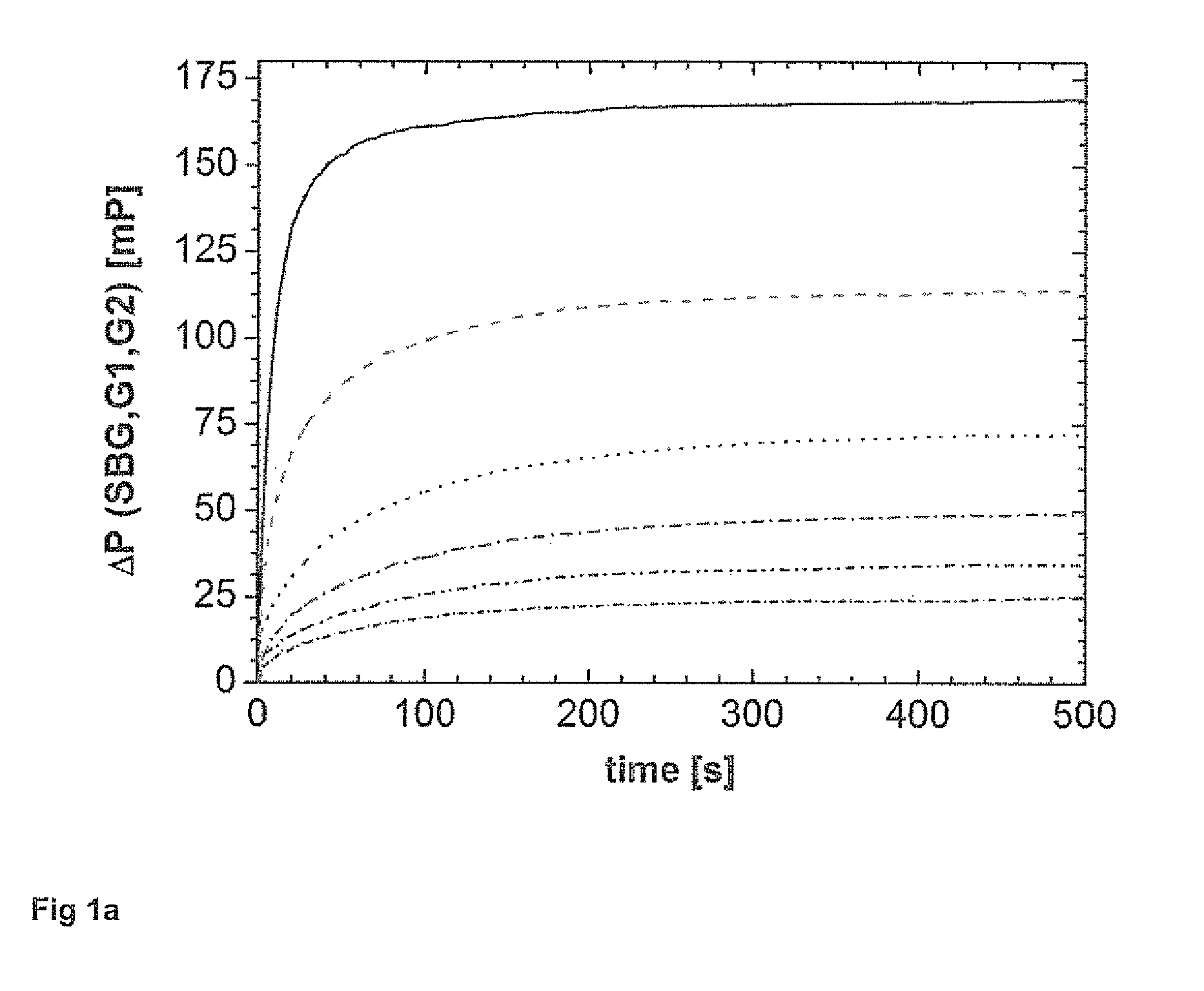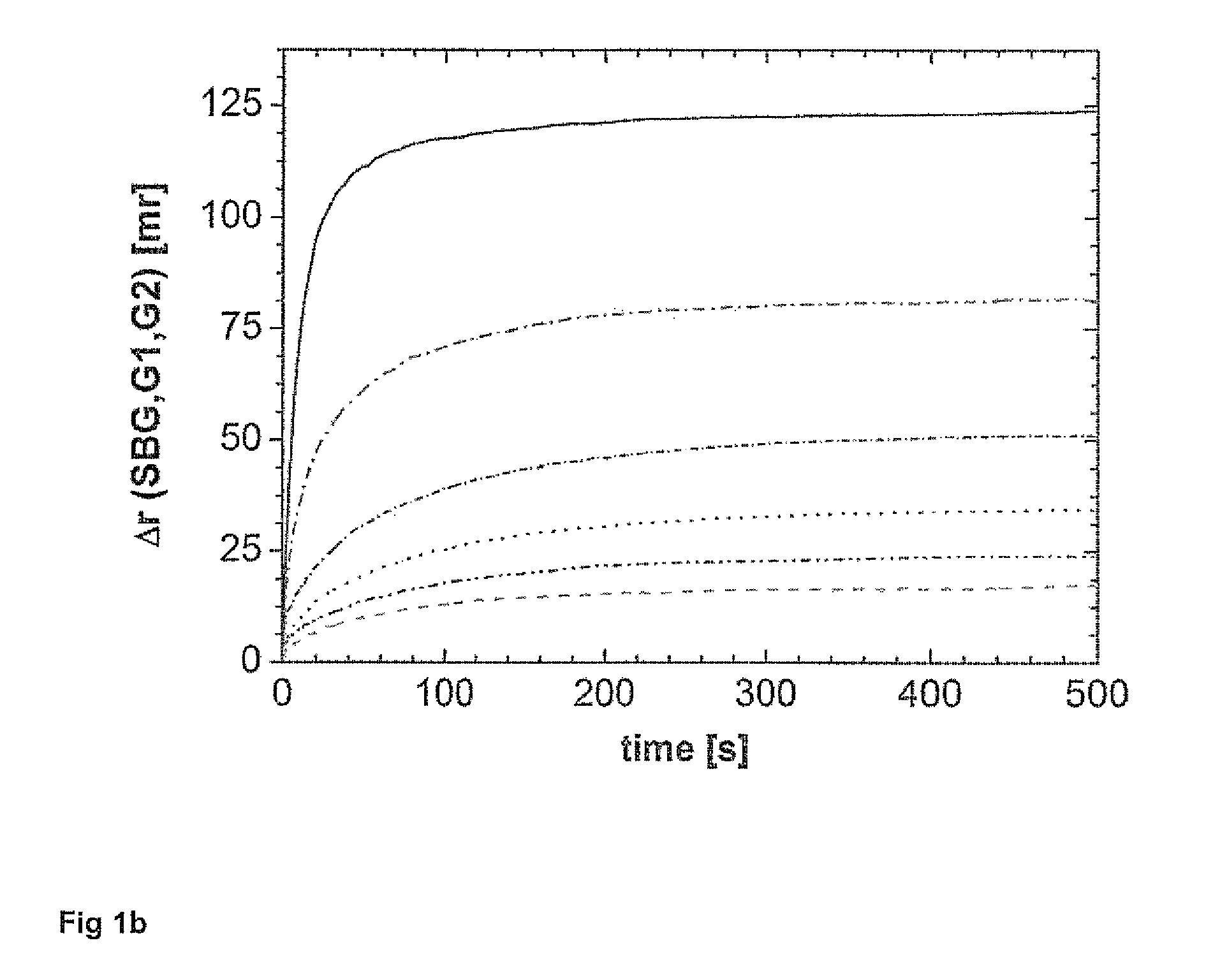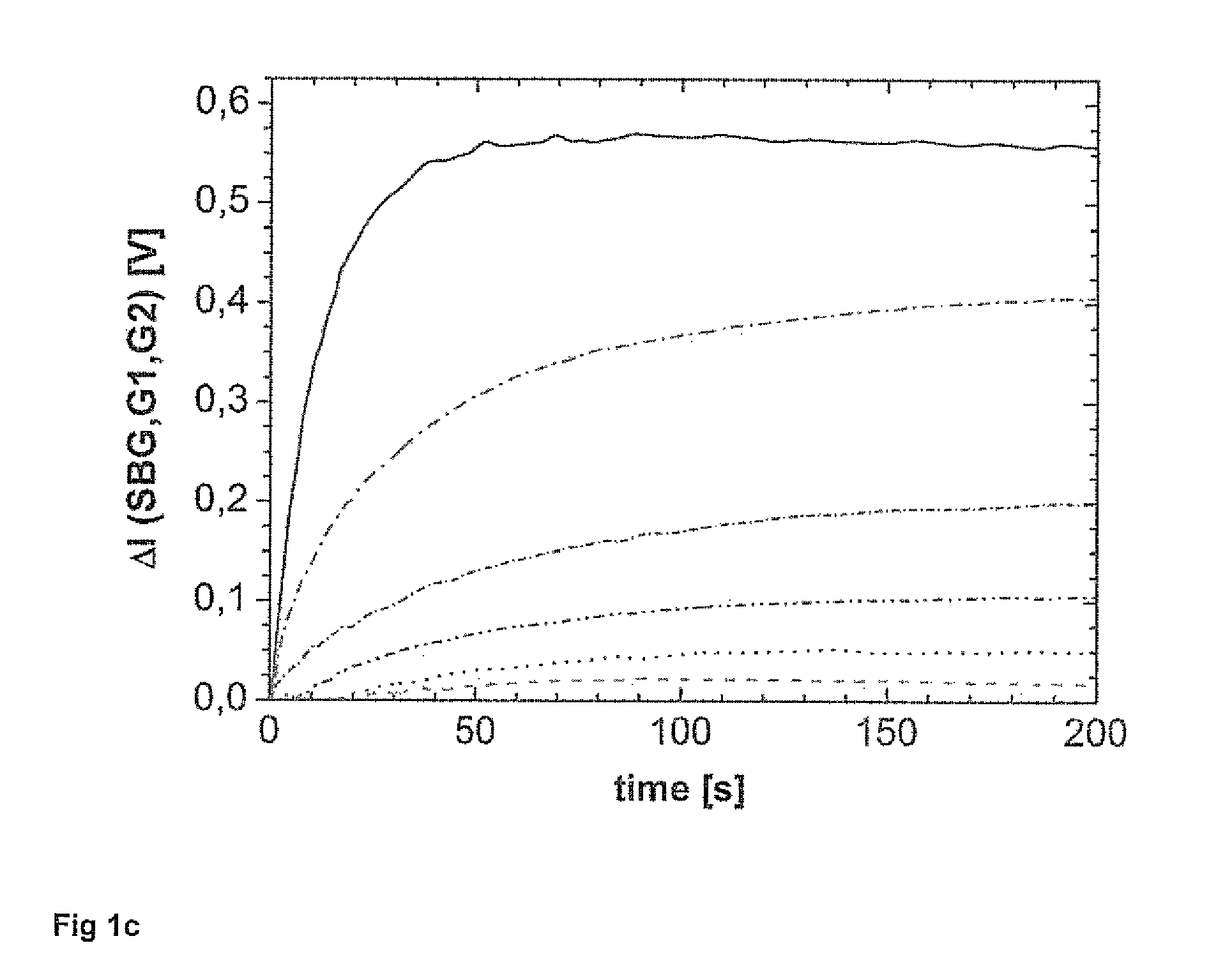Method of determining a concentration of analytes of interest in a sample
a technology of analytes and reaction mixtures, applied in the direction of carrier-bound/immobilised peptides, peptide sources, lavatory sanitory, etc., can solve the problems of high cost of fluorescence polarization and fluorescence intensity stopped-flow devices, potential threat to food safety, etc., and achieve the effect of less erroneous
- Summary
- Abstract
- Description
- Claims
- Application Information
AI Technical Summary
Benefits of technology
Problems solved by technology
Method used
Image
Examples
example 1
Set Up of the Inventive Method Using a Competitive Reaction
[0103]1) Addition of the sample with unknown or known concentration of analytes,[0104]2) Measurement of the background intensities,[0105]3) Addition of the fluorescence labeled analytes of interest,[0106]4) Determination of the device specific G-factor for the polarometer used by determination of the HH and HV signals using excitation of the mixture in horizontal direction and subsequent correction of the VH and VV intensities on the basis of G,[0107]5) Addition of the binding moiety, preferably an antibody or receptor specifically binding to the analytes of interest and the fluorescence labeled analytes of interest,[0108]6) Determining of H and V signals over time of the respective reaction mixtures or sample mixture, and[0109]7) Determination of the concentration of the analytes in the sample by comparison of the intensities over a time period and incorporating the relevant margin of error and measuring error.
[0110]The set...
PUM
| Property | Measurement | Unit |
|---|---|---|
| time-constant | aaaaa | aaaaa |
| time-constant | aaaaa | aaaaa |
| time | aaaaa | aaaaa |
Abstract
Description
Claims
Application Information
 Login to View More
Login to View More - R&D
- Intellectual Property
- Life Sciences
- Materials
- Tech Scout
- Unparalleled Data Quality
- Higher Quality Content
- 60% Fewer Hallucinations
Browse by: Latest US Patents, China's latest patents, Technical Efficacy Thesaurus, Application Domain, Technology Topic, Popular Technical Reports.
© 2025 PatSnap. All rights reserved.Legal|Privacy policy|Modern Slavery Act Transparency Statement|Sitemap|About US| Contact US: help@patsnap.com



